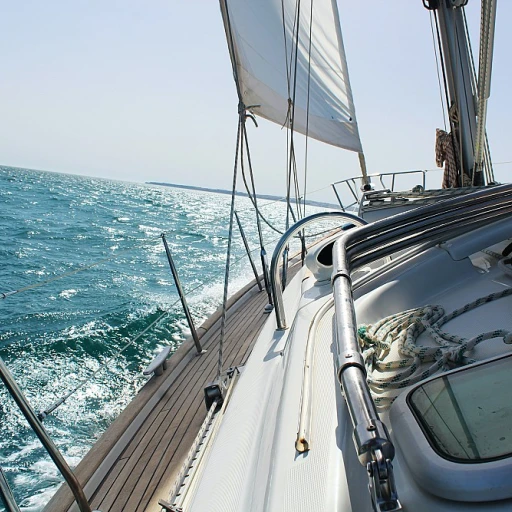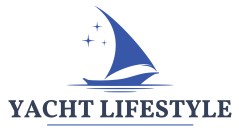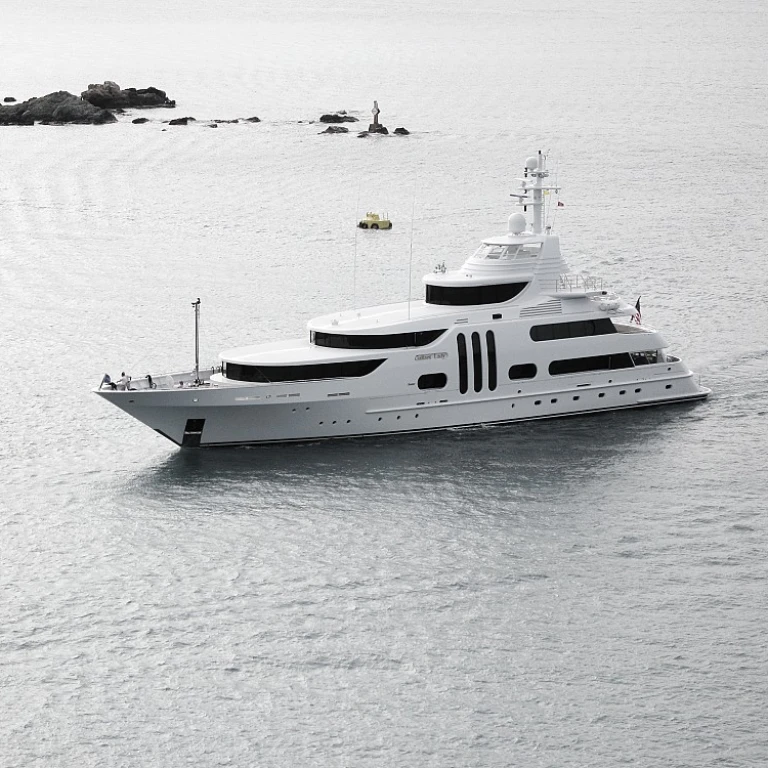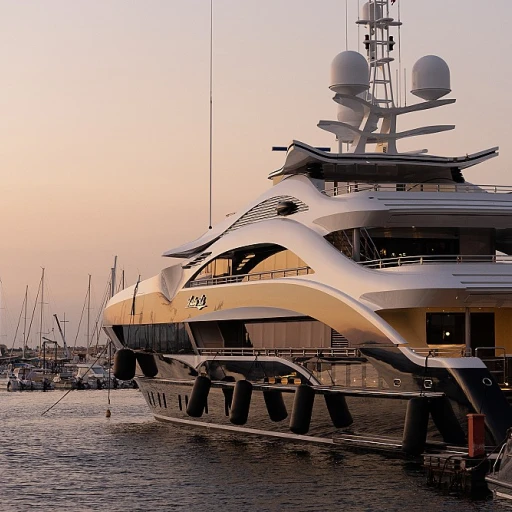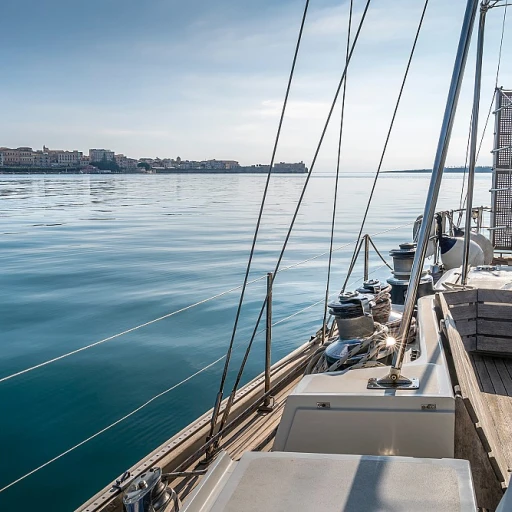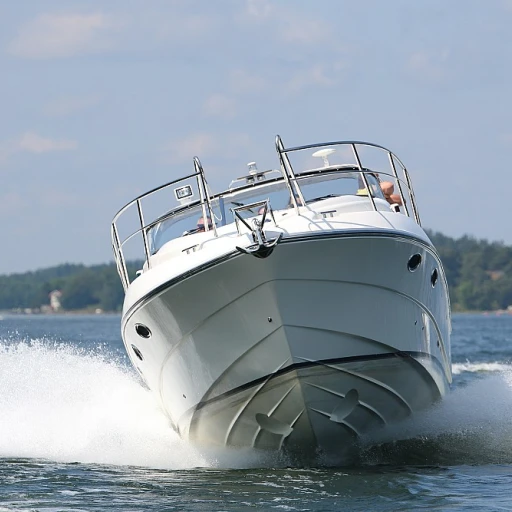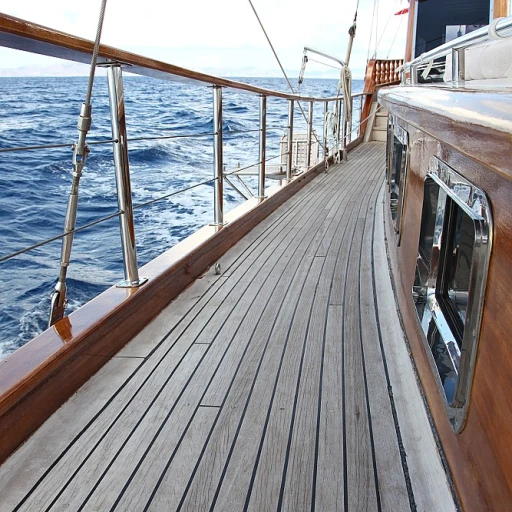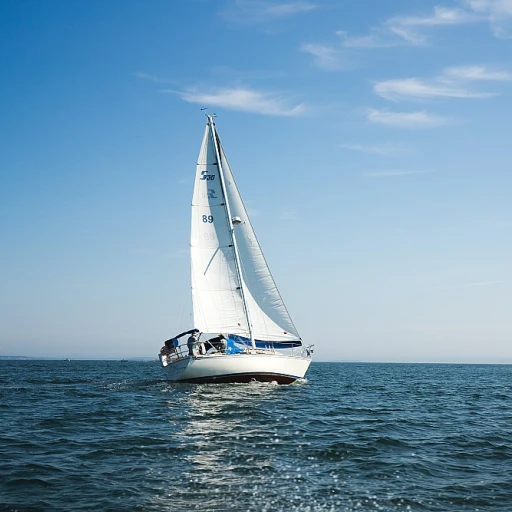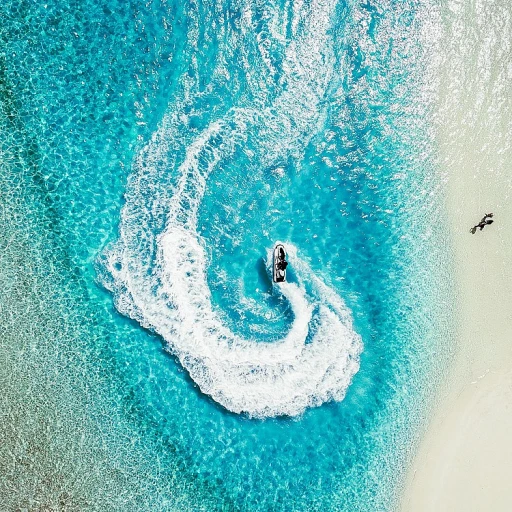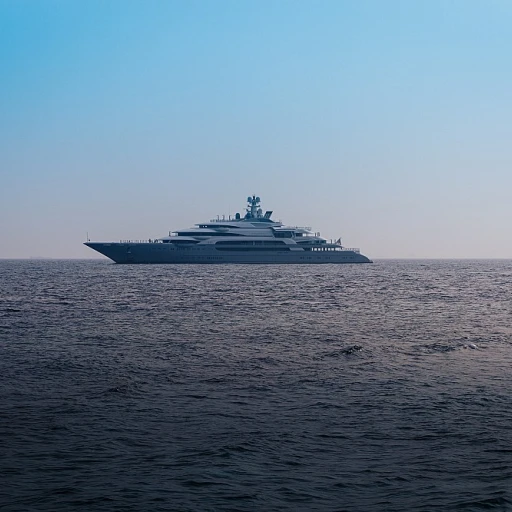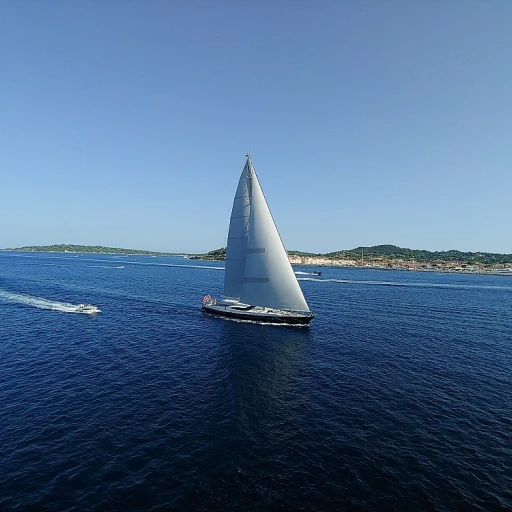Understanding Spring Lines
The Basics of Spring Line Mastery
Understanding the intricate role of spring lines in yachting is essential for any enthusiast looking to ensure their vessel remains secure whether docked or navigating a complex maritime environment. In the realm of docking, these lines are more than just ropes; they are the guardians that prevent your boat from stepping out of line during various conditions.
Spring lines bridge the gap between the bow and stern, with their primary job being to counteract the boat's tendency to drift forward or aft due to wind or current. When correctly applied, they effectively restrict the lateral and longitudinal movement of the vessel, offering a shield against unintended boat movement. When positioned strategically at the dock cleat, they help stabilize the craft, filling the crucial role of preventing the yacht from hitting adjacent objects.
These lines lead alongside the yacht’s hull, typically running a course from the stern dock to the forward cleat, or reversing from the stern lines to the bow cleat. Such engineering strokes ensure that as the boat rocks within its slip, it remains tied down with the right level of tension and security.
Part of mastering the spring line involves knowing the anatomy of its connection between the yacht and the dock post. Each line is tasked with its own role, contributing to a comprehensive plan that counters the combined forces of the environment. Strong winds, busy docks, and other unpredictable elements can transform a serene scene into one of intricate maneuvering.
Choosing the Right Spring Lines
Identifying Your Specific Needs
Choosing the right spring lines for your yacht involves a few key considerations. First, assess the dock where your boat will spend most of its time. The characteristics of the dock, such as its structure and whether it's a floating dock, can influence the type of spring lines you might need. Additionally, evaluate the wind current conditions prevalent in your docking area, as these can significantly affect how your vessel holds its position.
Understanding Line Materials
The material of the lines is crucial. Most commonly, nylon is preferred for its elasticity and strength, helping to absorb the shock loads that a boat dock experiences due to wave and wind forces. However, there are other materials like polypropylene and polyester that might fit better depending on specifics such as slip conditions and personal preference.
Matching the Right Line to Your Vessel
When selecting spring lines, consider your vessel's size and weight. A larger yacht will require thicker lines with greater load-bearing capacity. Additionally, think about how you moor your boat—whether it’s stern in or bow in—and how this will affect fore and aft line configuration. Selecting the correct stroke width and length for your bow spring and stern lines is just as critical in stabilizing and securing your vessel.
Plan for Safety and Flexibility
Safety is paramount, so ensure that your spring lines will secure your boat regardless of weather conditions. Invest in good quality equipment like robust cleats and ensure you have a flexible configuration that allows you to adjust the lines when necessary. To prevent boat movement effectively, sometimes additional dock lines are necessary when docking in challenging environments.
Properly equipping your yacht with the right gear helps maintain security, prevent damage, and give you peace of mind. For further tips on preparing your yacht, you may want to check out our guide on seasonal care essentials.
Techniques for Securing Spring Lines
Mastering the Secure Hold: Techniques for Fastening Spring Lines
Docking a yacht, especially in varying weather conditions, requires skillful handling of spring lines to effectively secure the vessel. While the concept may seem straightforward, a deeper understanding of docking techniques ensures safety and prevents unnecessary movement of the boat.
Properly securing spring lines involves a precise method where the dock cleat plays an essential role. As you approach the dock, always consider the wind current and adjust the vessel's position accordingly. This ensures the lines lead in the desired direction and maintain the necessary tension to prevent the boat from shifting, especially under challenging conditions.
Begin by identifying the appropriate cleats both onboard and on the dock. The bow spring line and bow lines should be tightened first, followed by the stern lines and stern dock lines. This sequence is crucial because it stabilizes the yacht before the aft spring line is positioned.
To further ensure a steady hold, consider the fore aft measurement. When securing larger yachts, it's essential to balance the forward and aft lines, aligning them with the natural angle of the dock. This reduces the strain on individual lines and maintains stability even when the yacht engine is turned off.
For added security, always ensure the slip and dock conditions are assessed thoroughly. Look for posts and structures that can be used to adequately tie and align spring lines. A floating dock may offer more flexibility, but it also requires adjustments to accommodate the boat's movement and stroke width variations.
Visiting the dock in different weather conditions will enhance your ability to adjust spring lines efficiently. Ensuring these techniques are part of your routine will not only secure your yacht but also embody the art of "mastering the secure hold" when docking. If you're interested in exploring lifeboat solutions on superyachts, check out this guide on
superyacht lifeboat solutions.
Spring Lines in Different Weather Conditions
Braving the Elements with Spring Lines
Weather conditions can be unpredictable, especially when sailing or docking. Spring lines play a crucial role in stabilizing your boat and keeping it secure despite the forces of nature. Ensuring proper use and technique is essential to dealing with the challenges posed by different weather conditions.
In a sheltered marina with light winds, the spring lines work alongside bow and stern lines to minimize the movement of the yacht. They help prevent the vessel from edging too far forward or aft by adjusting the line slack. Docking in a slip with calm conditions may not require too much adjustment, but it’s always wise to secure lines snugly to the dock cleats to counteract any unexpected drift.
When the wind picks up, or currents become stronger, spring lines become even more imperative. Their tension will absorb the stress that otherwise would be transferred to the cleats or bollards. In high winds, it is essential to utilize a longer lead for your spring lines, ensuring sufficient stretch and giving your vessel room to move without pulling the dock posts or cleats. Carefully consider the impact of wind currents, especially on a floating dock where the rise and fall can change the angle of the lines.
In adverse conditions, don’t underestimate the positioning and alignment of your lines. You may need to reconfigure the lines, altering stroke width and direction, to anticipate and adapt to side winds or inconsistent currents. Adjusting bow spring lines and stern dock lines can step in to counteract a sideways force when needed. The interplay between an engine's minimal power and the turn wheel will also determine how the boat moves while adjusting lines.
Severe weather conditions may also necessitate reevaluating your knot-tying techniques. Each mooring scenario requires attention – from donning the appropriate gear to avoid slipping, to double-checking the fore aft layout and tension against the wind's relentless stroke. Preparing for the worst protects against the risk of the boat moving uncontrollably or inducing strain on the cleats that prevent the boat from coming loose.
Learning to anticipate and respond swiftly to changing forecasts, alongside choosing the adequate size and material for your spring lines, can make a world of difference in handling rough waters. Ensure a sturdy setup by complementing the spring lines with robust bow and stern lines to enhance stability. Remember, understanding the nuances of docking and weather implications builds your mastery and can elevate your approach to yachting.
Innovations in Spring Line Technology
Emerging Technologies in Spring Line Design
In recent years, the world of yacht docking has experienced remarkable advancements, particularly in the design and functionality of spring lines. Understanding the nuances of these innovations can enhance docking techniques and improve safety measures significantly.
One of the key advancements is the integration of synthetic materials into the construction of dock lines. These materials are not only more durable but also provide better elasticity. This elasticity helps in absorbing shock loads, which is crucial during rough weather conditions when the wind and current can make the boat move unpredictably.
Furthermore, there are now spring lines equipped with built-in stretch cores. These cores allow the lines to stretch under load and retract when the tension decreases, preventing unnecessary stroke or strain on the dock cleat. Such technology also adds a layer of protection to the cleats and posts on both the dockside and the boat.
Advanced coating techniques have also been developed to enhance the longevity of spring lines. These coatings protect against UV rays and corrosion, ensuring that the lines remain reliable, even in challenging marine environments. This feature is especially beneficial when sailing in areas where saltwater and sun exposure are prevalent, as they can degrade traditional materials more rapidly.
Another innovative feature is the adjustable fore and aft lead system. This system allows for the precise adjustment of lines, which is particularly advantageous when docking in a slip at a floating dock where conditions can frequently change. By ensuring the lines lead appropriately, boat movement is minimized, and the risk of damage is reduced.
Lastly, some of the latest spring lines include sensors that can transmit data on the tension and angle of the lines to a smartphone app. This cutting-edge technology enables yacht owners to monitor their setup remotely and make real-time adjustments, ensuring their boat is always docked safely and securely.
These technological innovations are not just about embracing modernity; they are essential upgrades that enhance the overall docking experience, providing yacht enthusiasts with the tools needed to dock their vessels with confidence and ease.
Case Studies: Spring Lines in Action
The Practical Application of Spring Lines on the Water
Utilizing spring lines effectively can significantly impact the safety and stability of a yacht while docking. Consider a scenario where a yacht faces intense wind currents. As the wind pushes against the hull, the spring lines can play a crucial role in mitigating the vessel's movement, securing the stern and bow in place. By anchoring the spring lines to the right dock cleats, the lateral movement of the boat is minimized, preventing it from shifting alongside the dock.
In a real-life docking situation involving a tight slip, the strategic use of forward and aft spring lines can prevent the boat from striking against the dock posts. When properly set, the lines will create enough tension and control, facilitating a gentle slip into the dock without the need for excessive reversing or forward strokes from the engine. The careful application of the bow and stern lines also helps in counteracting the effect of the wind, ensuring the stern dock remains stable.
Imagine docking without the risk of sudden side to side movements; these lines effortlessly lead the yacht into its resting position. In fact, seasoned sailors often emphasize the importance of fine-tuning stroke width when setting the spring lines, as this determines the precision of the boat's movement into the dock.
For yachts located in floating docks, the lines should be adjusted accordingly to accommodate the rise and fall of tides. A well-maintained dock setup will have flexible dock cleats that allow for the dynamic adjustments needed for the boat's safety and the crew's peace of mind.
These techniques, when mastered, can ensure that docking is not just a mandatory procedure, but a demonstration of nautical expertise. As yachts continue to innovate with newer technologies, staying informed about the capabilities and applications of spring lines remains essential. Remember, it's not just about docking, but about mastering the art to prevent the boat from unnecessary damage and ensuring a smooth, stress-free experience.
